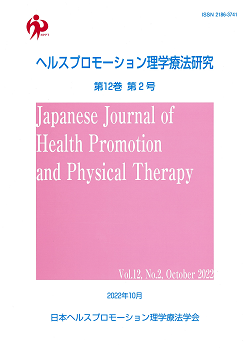Volume 12, Issue 2
Displaying 1-6 of 6 articles from this issue
- |<
- <
- 1
- >
- >|
ORIGINAL ARTICLES
-
Article type: Original Articles
2022Volume 12Issue 2 Pages 51-56
Published: October 26, 2022
Released on J-STAGE: October 28, 2022
Download PDF (413K) -
Article type: Original Articles
2022Volume 12Issue 2 Pages 57-62
Published: October 26, 2022
Released on J-STAGE: October 28, 2022
Download PDF (707K)
SHORT REPORT
-
Article type: Short Report
2022Volume 12Issue 2 Pages 63-67
Published: October 26, 2022
Released on J-STAGE: October 28, 2022
Download PDF (405K) -
 Article type: Short Report
Article type: Short Report
2022Volume 12Issue 2 Pages 69-74
Published: October 26, 2022
Released on J-STAGE: October 28, 2022
Download PDF (387K) -
Article type: Short Report
2022Volume 12Issue 2 Pages 75-79
Published: October 26, 2022
Released on J-STAGE: October 28, 2022
Download PDF (535K)
FIELD REPORT
-
Article type: Feild Report
2022Volume 12Issue 2 Pages 81-85
Published: October 26, 2022
Released on J-STAGE: October 28, 2022
Download PDF (426K)
- |<
- <
- 1
- >
- >|
